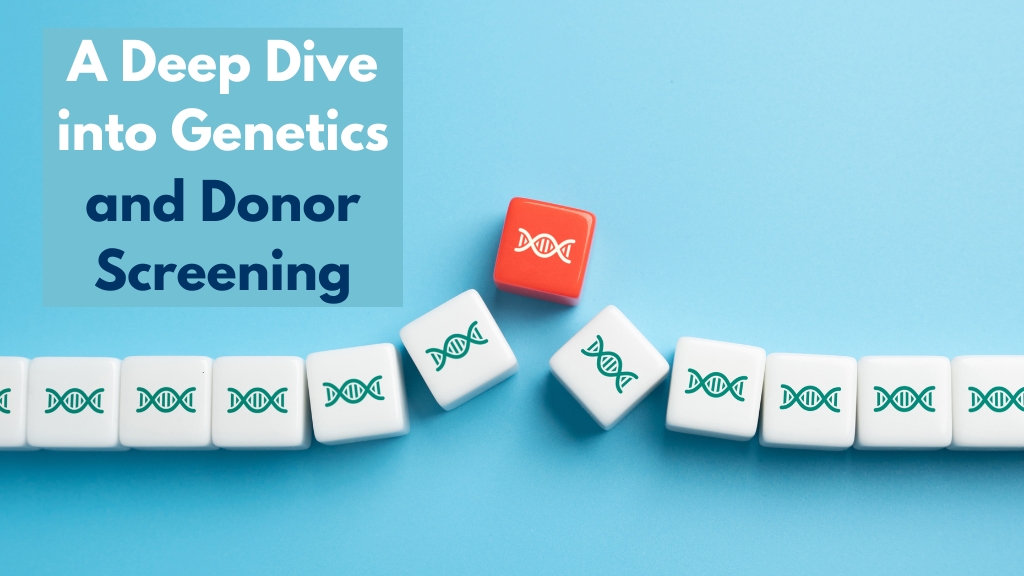Breaking Myths: Debunking Common Misconceptions About Sperm Donation

Donor sperm has existed for centuries. But since its start, secrecy has clouded its existence. This secrecy has created disinformation about a common, normal, and effective means to achieve a pregnancy. From wild to nearly conceivable, a well of misconceptions surround sperm donation. Let’s debunk some common myths.
Candidates Only Donate for the Money
People might think money is the only reason people donate sperm, but this is largely a myth. Donating sperm can seem like a prompt paycheck, but it’s not as easy as someone thinks. While it’s true that sperm banks compensate donors, many require a long-term commitment. This is, in part, because extensive medical screenings take time. Many people who donate sperm genuinely want to help others conceive. Plus, most sperm donors already have successful careers, debunking the myth that people only donate for the paycheck.
Certain Ethnicities Receive Higher Compensation
Sperm banks aim to maintain a diverse donor pool to meet the varied needs of recipients. Some ethnicities may be more in demand by certain recipients, but this does not translate into a blanket practice of higher compensation for those groups. Additionally, compensation rates are generally set by the sperm bank based on factors like the donor’s commitment and frequency of donations rather than any particular ethnic background. At Fairfax Cryobank, donors are paid an average of $4000 over a 6-month program, getting paid $150 per donation visit.
Donor Standards Don’t Exist
It’s a huge and damaging myth that there are no sperm donor standards. Fairfax Cryobank donor standards are some of the most extensive and rigorous in the country—requiring medical screening, psychological evaluations, sperm analysis, infectious disease screening, and a genetic history of the donor’s family.
After a sperm donor meets this criteria, we perform post-acceptance testing. We also accept less than 1% of donor applicants. With strict regulations in place to maintain high standards, sperm donation is a highly controlled process, debunking the myth that there are none in place.
Anyone Can Be a Sperm Donor
It’s also a myth that anyone can be a donor. There are many rules, like specific age parameters. At Fairfax Cryobank, sperm donors must be between the ages of 18 and 39. Some banks require a time commitment, making the process even more selective. Lifestyle factors, such as smoking, disqualify people from being donors. Many banks also require a minimum high school education level, favoring a college degree.
Babies Conceived By Donor Sperm Will Have Harder Lives
One harmful myth is that donor-conceived children will suffer. This myth has long been used by anti-LGBTQIA+ propaganda and is untrue. A longitudinal study spanning 20 years by the University of Cambridge shows that donor-conceived adults had healthy relationships with their parents. The key factor was that parents were transparent about the child being donor-conceived. The study found no psychological differences between adults who were donor-conceived and adults who had two biological parents.
Someone’s emotional well-being is largely shaped by the parenting they receive, not the manner of their conception. Many donor-conceived children thrive in families that are open, communicative, and willing to provide answers to their questions about what brought them into the world.
Additionally, advancements in genetic testing allow donor-conceived individuals to learn more about their biological background, helping to mitigate feelings of confusion or isolation. More importantly, many families now choose known donors, allowing children to later contact the donor or donor-conceived siblings should the person have an interest or want more information.
Redheads Can’t Be Sperm Donors
Sperm banks offer a range of preferences to accommodate a diverse body of clients. This includes donors with a variety of physical traits, including red hair. While it’s true that red hair is a relatively rare genetic trait, often considered desirable by recipients who want to create children with specific physical characteristics that look like them, it’s not true they can’t become donors.
Sperm banks typically encourage donors with all types of hair color, including red to apply, as long as they meet the other health, genetic, and psychological criteria. While some sperm banks may have fewer red-haired donors, there is no restriction preventing them from donating.
There Is No Way to Keep Track of Donor Offspring Numbers
Many sperm banks enforce strict limits on the number of families a donor can help create, typically ranging from 10 to 25 families per donor. At Fairfax, donor sales end when 25 families in the United States have been reported. Further, while anonymous sperm donation was more common in the past, advancements in technology and at-home genetic testing services have made it possible to track donor-conceived children.
Sperm banks maintain detailed records of donor-conceived births reported by recipient families; reputable banks encourage reporting to monitor donor usage. Some countries and clinics also have registries that help track donor-conceived siblings.
Only Same-Sex Couples Use Donor Sperm
While it’s true that same-sex couples may use donor sperm to help build their families, this myth fails to encompass the wide range of families that use donor sperm to have children. Single mothers by choice often choose sperm donation as a way to start a family for a variety of reasons, some may not want a relationship or have not yet found a partner. Many people with pregnancy capacity may decide to have children on their own, using donor sperm to achieve their goal of becoming parents.
Heterosexual couples facing infertility also turn to sperm donation. Couples with male factor infertility, such as low sperm count or poor sperm quality, often use donor sperm to conceive. In these cases, donor sperm provides a solution to help couples who otherwise would not be able to have biological children.
In truth, using donor sperm as a means to have children is common and utilized by many different types of families. It’s helpful to slash myths and correct misinformation to normalize this method of family building. Donor sperm through a trustworthy bank has the potential to help families achieve their dreams.







